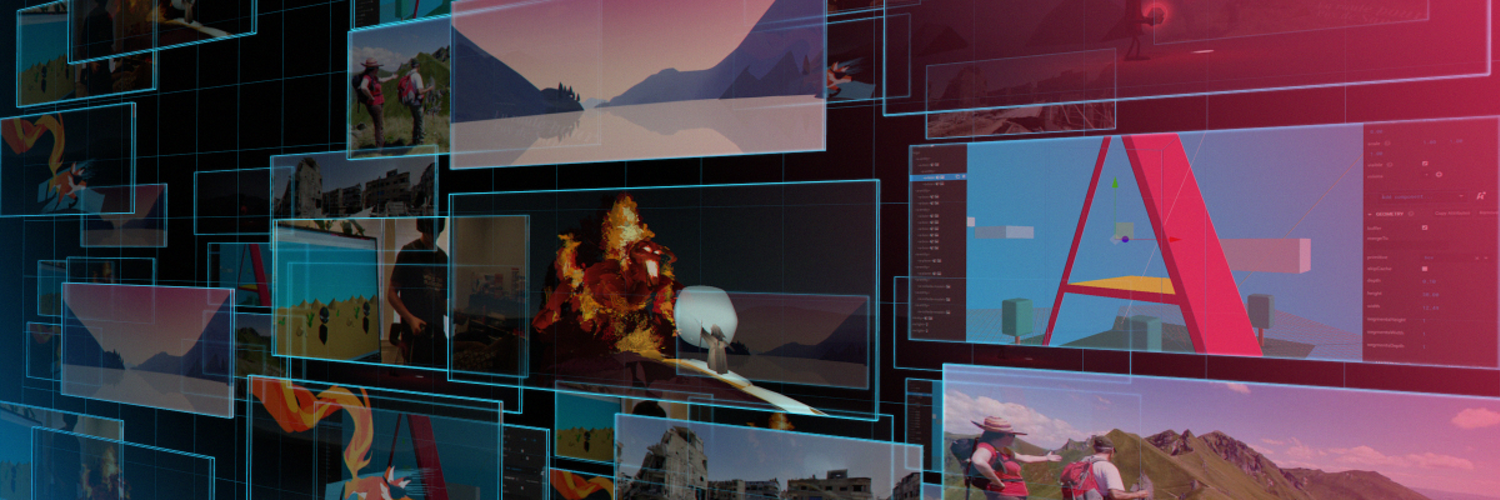A-Frame v0.4.0 - The Registry

Happy first birthday to A-Frame!. A-Frame was born exactly one year ago with the mission to make WebVR content creation accessible and to enable rapid innovation. We can’t begin to describe how much the community has grown and the amazing things people have contributed and built in the past year.
We celebrate with the release of v0.4.0! v0.4.0 comes with Oculus Touch support, API polish, bug fixes, and an update to the A-Frame Inspector. In the past few months, we started the A-Frame Registry! We’ll be expanding upon the Registry and focus on building out more tooling and ecosystem on top of A-Frame.

Grab the latest build at
https://aframe.io/releases/0.4.0/aframe.min.js or npm install aframe.
What’s New?
The Registry is a curated repository of open source community A-Frame components, like the Unity Asset Store for A-Frame. In the next few months, we’ll be working with community developers on getting the Registry populated with quality A-Frame components.
The Inspector update includes UI polish and bug fixes. The Inspector has initial integration with the Registry; in the component dropdown on the entity panel, we are able to inject and attach components straight from the Registry. This integration makes components such as physics, particle systems, text, mountains, or animations a few clicks away:

Oculus Touch controllers have landed thanks to
@machenmusik (@mchen on Slack) with models
provided by @arturitu! The hand-controls
component supports all different the Oculus Touch hand poses for each finger.
Speaking of Oculus, @machenmusik also added automatic Enter VR support for
browsers that support it, primarily Carmel!
For A-Frame itself, we’ve improved API surrounding getAttribute and
setAttribute, and fixed major bugs regarding component dependencies, the
cursor component, and primitives.
Some new features include a reverseDrag property for look-controls for
static 360° use cases, support for ambient
occlusion/displacement/normal/spherical environment maps for the standard
material (thanks for Ada Rose Edwards), and keyboard shortcuts to
take perspective (<ctrl> + <alt> + s) and equirectangular (<ctrl> + <alt> + <shift> + s)
screenshots.
Check out the release notes for the complete changelog, which includes a list of breaking changes and deprecations to help migrate.
What Have People Built?
A-Frame has been hyping up since the last release. We are really glad that everyone is enjoying A-Frame and finds it useful. We’ve seen an approximate 50% growth in activity across Slack, GitHub, websites since late August. In the meetups we’ve attended, we’ve received great feedback of A-Frame and the support on Stack Overflow. We even got sent flowers from abroad! With that, people have been able to build awesome A-Frame projects:
Get colorful with A-Painter! Paint in VR from your browser and then share it with all your friends over the Web. https://t.co/qp2f2EB2Tz pic.twitter.com/fycL8o4jxL
— A-Frame (@aframevr) September 20, 2016
Teleport component for #aframevr released!https://t.co/2p8YPwBE3A #WebVR @aframevr @htcvive pic.twitter.com/TQeBoiSCUX
— Fernando Serrano (@fernandojsg) November 1, 2016
Here's an @aframevr project I've been working on for a few weeks. StageVR: practice your next talk in VR ð¥ #WebVR https://t.co/2VTxKg1k8u pic.twitter.com/1moIG36AII
— Jonathan Z. White (@JonathanZWhite) November 10, 2016
The Catherine Storr Experience by @Dan_FS. A fusion of cultural heritage with new forms of creativity. https://t.co/TCJK2SbHeb pic.twitter.com/rVzqcXzP1i
— A-Frame (@aframevr) October 31, 2016
Here's an @aframevr project I've been working on this week. ScreenVR: use your desktop on the web, in VR 🔥 #WebVR https://t.co/nyTYooGsTO pic.twitter.com/VIChZAA92y
— Jonathan Z. White (@JonathanZWhite) November 23, 2016
"Halloween Feature! Building Ghost Train Builder" by @realisetweets. Design, implementation w/ @vuejs, perf. https://t.co/3RiD6enDQX pic.twitter.com/2Oj16WgHQk
— A-Frame (@aframevr) October 31, 2016
This is the @aframevr project I've worked on. Make your own snowflake! https://t.co/JK9nU6eJeM #WebVR #snow #눈 pic.twitter.com/rzzYZEdX2m
— I'm Sure (@SureBak) November 26, 2016
Ghost Train Builder by @realisetweets. Randomly generated and custom SPOOKY SCARY #halloween #webvr rides ððð» https://t.co/XzPxoHotdT pic.twitter.com/fYVKFg1kg3
— A-Frame (@aframevr) October 28, 2016
"Why iStaging Chose A-Frame" by Alexandro Chen, a developer enabling immersive real estate tours in production. https://t.co/ULGk4dQQ8M pic.twitter.com/GjXcgfMCeL
— A-Frame (@aframevr) October 27, 2016
Virtual Forest by @koen_hufkens. Tracking the changing seasons in a forest with live #360 photos. https://t.co/bnFJZznkdI pic.twitter.com/02PKaGBy57
— A-Frame (@aframevr) October 18, 2016
SENSE OF PROMISE by @akupresanin. Witness five elixirs over five worlds, before someone buys them off the blockchain https://t.co/Qi383GwbWn pic.twitter.com/HfexHameWt
— A-Frame (@aframevr) October 12, 2016
Hyperlinks are coming to WebVR! https://t.co/pfMgQDI2pf
— Mozilla VR (@mozillavr) November 2, 2016
Brought to you from the future by Mozilla VR! (Demo by @EricaLayton @whoyee @cvanw) pic.twitter.com/nBAbM7fOIT
Published my article on how I built Kubernetes in virtual reality @kubernetesio @CloudNativeFdn : https://t.co/gxLIBgjhiq #VR #kubernetes pic.twitter.com/CgDfrvYZYM
— Ryan van Niekerk (@iamnayr) November 22, 2016
What’s Next?
We will populate and build out the A-Frame Registry, we’re aiming for 20 by the end of the year, and at least 100 by the end of next year. This will enable powerful and easy-to-use features for A-Frame developers. We will expand ecosystem and tools on top of A-Frame, as we have with the Inspector.
We will continue producing showcase content for A-Frame and WebVR as we’ve done with A-Painter. Within the next month, we will be releasing a room scale first-person shooting game built with A-Frame.
In the next release of A-Frame, there may be movement with animations, systems, materials, and textures as we improve APIs. Link traversal will arrive shortly as the API stabilizes and ships on browser platforms.
2016 was a monumental year for WebVR. A-Frame got tens of thousands of designer, developers, and creators excited about the future of the Web. Let’s carry that momentum and then some into 2017!
